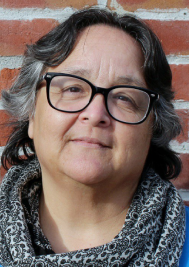This is a year like no other. Every aspect of our daily life has been disrupted and our future has been clouded.
Commerce is severely restricted. Travel is all but stopped. Daily routines have been turned upside down. Public health is facing its biggest crisis in living memory. The present is chaotic and our future uncertain. All because of a virus.
I think it’s safe to say that not a single person in the world has gone untouched by the effects of the COVID-19 pandemic. Even without contracting the virus it has dramatically affected every aspect of daily life and made the future uncertain.
It looked small at the beginning
This started out as a quiet ripple of a wave. Just a few cases of what looked like pneumonia were documented at the end of December 2019 in China. At the time there was no obvious warning of the enormously distressing events to come.
Soon it was clear that this virus is different from what has come before. It proved incredibly virulent. It attacks the lungs, but also other vital organs like the heart and brain. Its symptoms are inconsistent and wide ranging—it can cause complete respiratory failure or temporary loss of smell or have no visible symptoms at all. These inconsistencies don’t track to certain ages or gender or geography. There’s a randomness to the illness. But we can see that older people and people with underlying health conditions, including diabetes, are at greater risk of worse outcomes.
The questions COVID-19 brings up cannot be answered simply or directly, making the prognosis all the more uncertain. Can we tell if someone is infected just by looking for physical symptoms? Does the virus establish itself in the respiratory system or is it blood borne? How long do people stay sick? What kind of treatment gives people the best chance for recovering completely? How long does immunity last? Can the virus come back after the person recovers? Can we build herd immunity? Is there any long lasting immunity?
By the end of January 2020, about 100 confirmed cases were documented across 19 countries and four continents. The first week of March saw 100,000 confirmed cases worldwide. About a month later that number grew to over 1,000,000. We hadn’t even got to 100 days after the first cases of COVID-19 had been identified.
Within three months a tsunami of viral infection was unleashed, dramatically multiplying and spreading COVID-19 across the globe. We are now living through a pandemic of historic proportions.
But then...
I’m still stunned by how quickly COVID-19 took over everything.
COVID-19 pushed its way into my headspace. Early on I found my thoughts, usually filled with details related to managing diabetes, shifted to how viruses spread and what to do to stay healthy. Concern about the cost of medicine was replaced with concern about availability of sanitizing gel, face masks, and, yes, even toilet paper. COVID-19 posed an immediate risk. Diabetes would just have to wait.
It’s pushed all other stories off our screens and pages. It has us compulsively washing our hands and dutifully standing six feet apart—although maybe not enough of us. It has us staying at home, sheltering in place—at least those of us who can afford to or have jobs that can be easily done remotely. Those who can’t stay home venture out wearing masks and with containers of hand sanitizing gel in their pockets—at least those of us who accept that we are in the middle of the biggest health emergency of our lifetime and understand something about how infectious respiratory illnesses spread.
Then came all the stoppages and closures. National borders closed, then regional ones. Airlines stopped flying so many planes. Cargo and cruise companies stopped sailing so many ships. The Earth became quiet. Factories and businesses closed. Workers were sent home. Shops and restaurants closed. Workers were sent home. Special events were postponed and, ultimately, cancelled. No festivals, concerts, or sporting events. Schools closed or went virtual. Governments cut back on services. Workers were sent home.
Without a vaccine the best thing to do was to keep people away from each other so that the infection rate slows down. Without a vaccine, staying apart was the best we could do.
Everyone, just stay home! Only come out when you really need to: for food or medicine, or if there’s an emergency. Only come out if your job is to make sure that food or medicine is available or if you help in emergencies. Everyone else, stay home.
Feelings of isolation and loneliness started to take hold. Not able to gather, we miss our friends, family, and colleagues. We miss sharing personal milestones and holidays. Births, birthdays, weddings, graduations, and deaths are all marked from afar.
Worse yet, we missed sharing the banalities of daily life. A shared cup of coffee in the morning. The random bit of gossip at the water cooler. A hummingbird spotted while working out in the garden. The days blur into weeks, into months. We lose track of when we are. Marking time grows meaningless.
Some of us Facetime to counter loneliness and stay connected. Others Zoom. Still others WhatsApp. We’ve figured out how to play games, solve puzzles, and sing karaoke online. But, it simply isn’t the same as getting together in person. Missing are the handshakes and hugs. Missing are the random encounters that come with being in the same place at the same time. Missing is the breaking of bread together and the sharing of a bottle. Every meetup takes on the feel of a business meeting or a university lecture. And every absence is underscored with a feeling of loss.
There’s talk of a “new normal.” One where we keep our physical distance and our groupings remain small. A normal where we talk through plexiglass. Where more work is done remotely, from our homes. Where whole sectors of our economy, like hospitality, shrink and stay small. Where more education is delivered online and rituals like school sports and assemblies become demonstrations seen on a screen rather than in-person experiences.
We don’t know when close social contact will come back into our lives. We expect it will be different from before, we just don’t know how.
Eight months in with no end in sight, we wonder how this will all end. All of this uncertainty is taking a toll on our mental health. We are feeling anxious and depressed. Some of us are drinking, or smoking, or using other substances more in an attempt to relieve the never-ending stress we’re feeling.
For some of us it feels overwhelmingly hopeless and we have thoughts about how to bring this all to an end. For those who die by suicide their numbers won’t be counted among those killed by COVID-19 and yet the virus was the cause.
Lives changed
Our daily lives have been disrupted for now by COVID-19. These disruptions may be forever. As long as we don’t have a vaccine and infected people move about freely the virus will continue to spread.
Each time we leave our homes we risk infection. We do things to reduce that risk. But, right now, there is no way to eliminate that risk completely.
The danger of contracting COVID-19 puts us in a state of hyper-alertness. We notice things that before were inconsequential. For every surface touched we wonder who touched it before. For every cough or sneeze heard we try to determine if the spray will reach us. For every person walking by without a covering on their nose and mouth we hold our breath for a moment or two. All of these things represent danger to us and our health.
We respond by moving away or by sanitizing our hands again. But even after we do these things a sense of uneasiness remains. Fear and uncertainty hang in the air like so many infected droplets. These thoughts and feelings come to us again and again until a pattern is established. Once benign experiences transform into triggers.
The trauma of living during a pandemic is leaving its mark.
Some marks are physical, like the lesions found on the lungs. Some are economic, like the dramatic shrinking of marketplaces. Other marks are being left on social norms, like not shaking hands or hugging.
But the most enduring mark will be on our very souls. When this pandemic is over and we move on to whatever follows will we feel safe and secure again? Or will we feel a twinge of anxiousness at the sound of a cough or sneeze?



